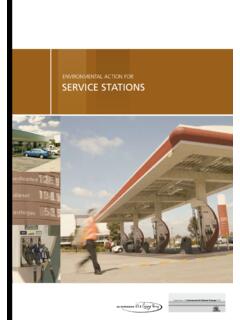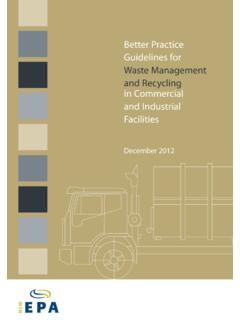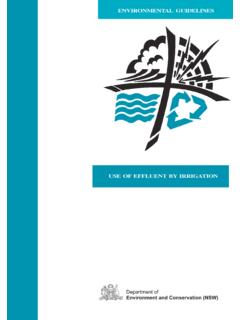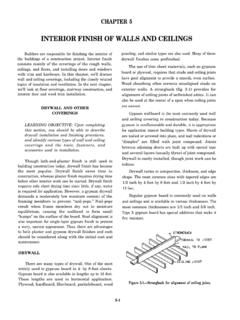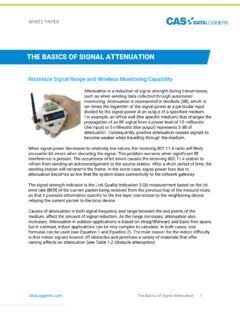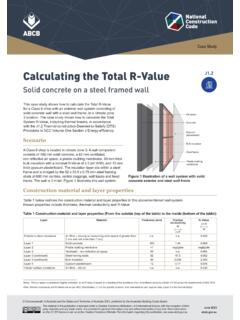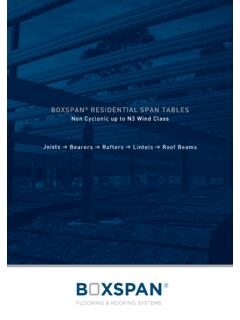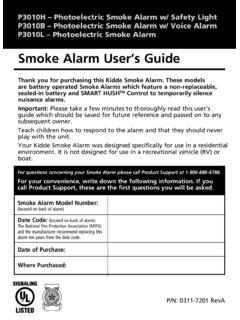Transcription of Environmental benefits of recycling
1 Environmental benefits of recyclingDepartment of Environment, Climate Change and Water NSWBD isclaimerThe Department of Environment, Climate Change and Water NSW (DECCW ) has made all reasonable efforts to ensure that the contents of this document are factual and free of error. However the State of NSW and the Department of Environment, Climate Change and Water NSW shall not be liable for any damage or loss which may occur in relation to any person taking action or not on the basis of this by:Department of Environment, Climate Change and Water NSW59 61 Goulburn StreetPO Box A290 Sydney South 1232Ph: (02) 9995 5000 (switchboard)Ph: 131 555 (environment information and publications requests)Ph: 1300 361 967 (national parks information and publications requests)Fax: (02) 9995 5999 TTY: (02) 9211 4723 Email.
2 DECCW 2010/58 ISBN 978 1 74232 530 9 June 2010 Department of Environment, Climate Change and Water NSW (DECCW ), June 2010 The Department of Environment, Climate Change and Water NSW is pleased to allow this material to be reproduced in whole or in part, provided the meaning is unchanged and its source, publisher and authorship are benefits of recycling1 Table of Contents1 Introduction ..32 Background ..3 recycling in general ..3 Prior studies ..4 Environmental benefits of recycling calculator ..43 Scope ..5 System boundary for the study ..6 Reference unit ..7 Environmental indicators ..7 Intended applications ..7 Data quality requirements ..84 Methodology ..8 Life cycle assessment ..8 Goal and scope definition.
3 9 Inventory analysis ..9 Impact assessment ..9 Interpretation ..9 LCA software ..9 Quantifying the benefits of recycling ..105 Inventory ..10 Waste collection assumptions ..13 Landfill assumptions ..13 Material recover facility assumptions ..13 Assumptions on energy production ..136 Results ..147 Discussion ..15 Comparison of materials by 15 Comparison of materials within categories ..16 Metals ..16 Concrete, brick and asphalt ..17 Paper and cardboard ..18 Organics ..19 Glass ..20 Plastics ..21 Department of Environment, Climate Change and Water NSW28 Greenhouse gas sensitivity to landfill assumptions .. 229 Comparison ..23 Comparison of materials by 2310 Conclusion ..26 Limitations ..2611 References.
4 27 List of figures Figure 1 Sample output from the Environmental benefits of recycling calculator .. 4 Figure 2 System boundary for LCA ..6 Figure 3 Life cycle system 8 Figure 4 The components of an LCA ..9 Figure 5 Method for calculating net Environmental savings in the recycling process .. 10 Figure 6 Average net benefit of recycling 1 tonne of waste by material category .. 15 Figure 7 Average net benefit of recycling 1 tonne of metals waste .. 16 Figure 8 Average net benefit of recycling 1 tonne of concrete, brick and asphalt waste .. 17 Figure 9 Average net benefit of recycling 1 tonne of paper and board waste .. 18 Figure 10 Average net benefit of recycling 1 tonne of organics waste .. 19 Figure 11 Average net benefit of recycling 1 tonne of glass waste.
5 20 Figure 12 Average net benefit of recycling 1 tonne of plastics waste .. 21 Figure 13 Sensitivity of organic materials to changes in landfill assumptions .. 22 List of tables Table 1 Materials studied ..5 Table 2 Environmental indicators ..7 Table 3 Materials included in the study ..11 Table 4 Net benefit of recycling 1 tonne of waste material .. 14 Table 5 Results compared to other studies (greenhouse gases) .. 24 Abbreviations C & I Commercial and IndustrialC & D Construction and DemonstrationDECCW The Department of Environment, Climate Change and Water NSWLCA Life Cycle AssessmentEnvironmental benefits of recycling31 IntroductionThe aim of the Environmental benefits of recycling (EBR) Study (October 2009) is to develop tangible measures to express the Environmental benefits associated with the recycling of various materials.
6 It measures the estimated energy, water, greenhouse gas and landfill savings of recycling programs. Through this study, the Department of Environment, Climate Change and Water (DECCW ) aims to provide a transparent and objective evaluation of the Environmental benefits and impacts of recycling 21 waste materials from residential, commercial and industrial (C&I) and construction and demolition (C&D) sources in New South Wales. In determining Environmental impacts the study has adopted, where feasible, methods acceptable to the federal Department of Climate Change under greenhouse gas quantification and offsetting schemes such as Greenhouse Friendly. This study is based on a scientific and transparent Life Cycle Assessment (LCA) methodology.
7 It has used an international best practice LCA methodology to assess the potential Environmental impacts of recycling . The following report seeks to document the results of the LCA study undertaken, in accordance with the international standard ISO14040 (2006).2 BackgroundRecycling in generalIn New South Wales (NSW ) there is strong public support for recycling which has been encouraged by governments and industry alike. This support has been based on the assertion that recycling is good because it has a positive impact on the environment through the saving of resources and a reduction in the impacts resulting from in the assertion is the assumption that the total Environmental impact of recycling is less than the impact of traditional waste disposal such as landfill.
8 The belief that recycling is good is founded on the more obvious benefits of avoiding landfill processes and the notion that material is reused and therefore does not need to be extracted from the environment. These benefits are indeed present for many recycling processes, however recycling almost always has an Environmental impact of its own. This recycling impact is typically associated with collection methods, such as trucks and sorting facilities, and material reprocessing methods, such as aluminium smelters or paper reprocessors. Once these impacts become part of the consideration, the statement recycling is good becomes more difficult to order for recycling to be environmentally advantageous, benefits such as virgin material substitution and avoided landfill and material recovery need to offset recycling related impacts such as material collection and reprocessing.
9 Only by objectively assessing the impacts associated with the various components of a recycling process and its alternative landfill process (landfill is the predominant waste disposal practice in Australia) can it be concluded that a recycling process is environmentally than accepting the assertion recycling is good , this study undertakes the assessment necessary to determine if recycling is environmentally preferable across a range of material types. In addition to determining if recycling is beneficial, the LCA method used also quantifies benefits across a range of Environmental of Environment, Climate Change and Water NSW4 Prior studiesThis study is not unique in attempting to quantify the benefits of recycling a range of waste materials.
10 It builds upon the initial benefits of recycling Study1 and the subsequent Environmental benefits of recycling Calculator2, by expanding the list of recyclable materials and adding landfill savings as an Environmental benefit. Both these studies sought to quantify and then disseminate benefits associated with recycling , and both employed an LCA Victoria, numerous recycling related studies have been undertaken. In particular the Life Cycle Impact Data for Resource Recovery from Commercial and Industrial and Construction and Demolition Waste in Victoria (Grant and James 2005) uses LCA to assess benefits associated with C&I and C&D waste streams, and the Stage 2 Report for Life Cycle Assessment for Paper and Packaging Waste Management Scenarios in Victoria (Grant, James et al.)
